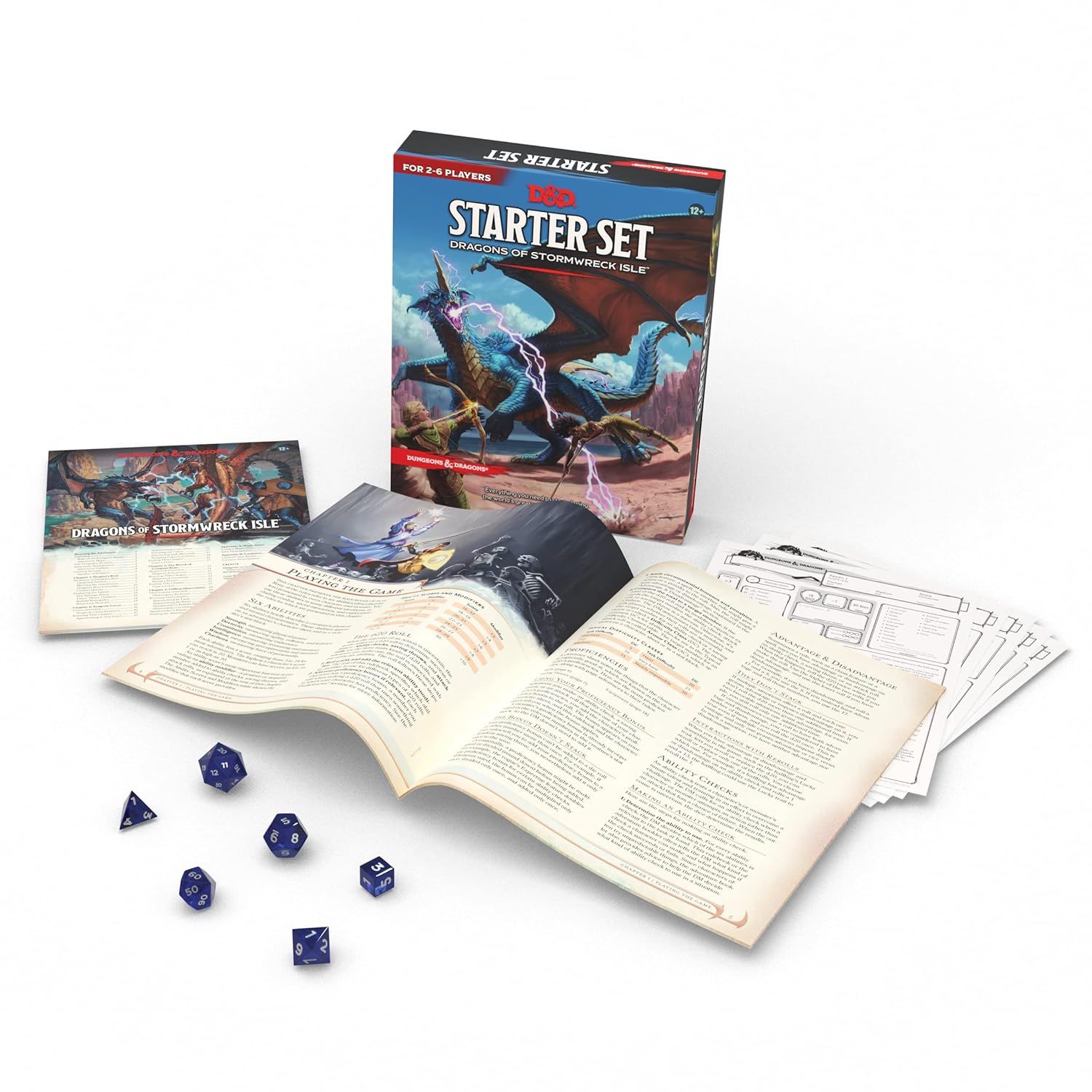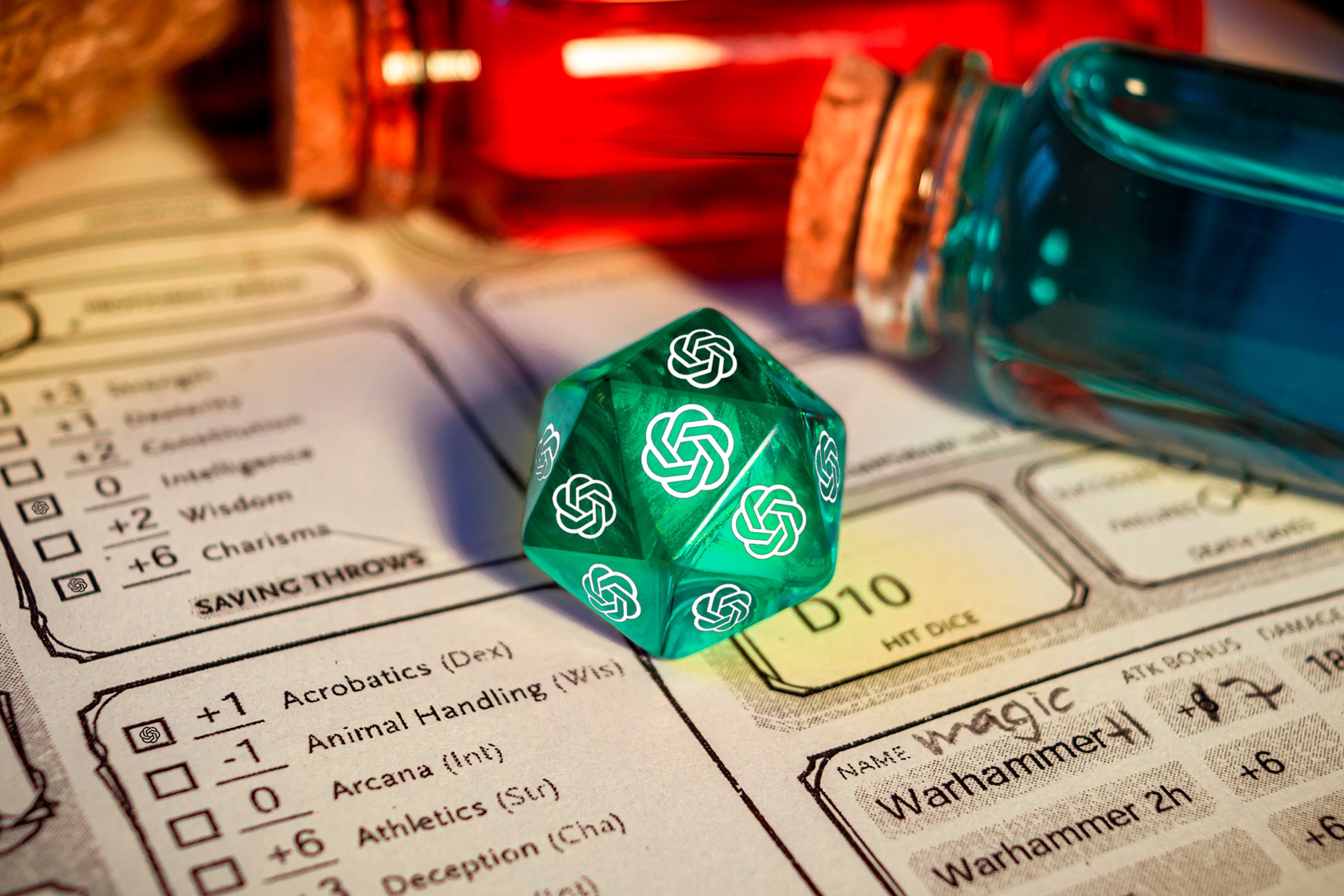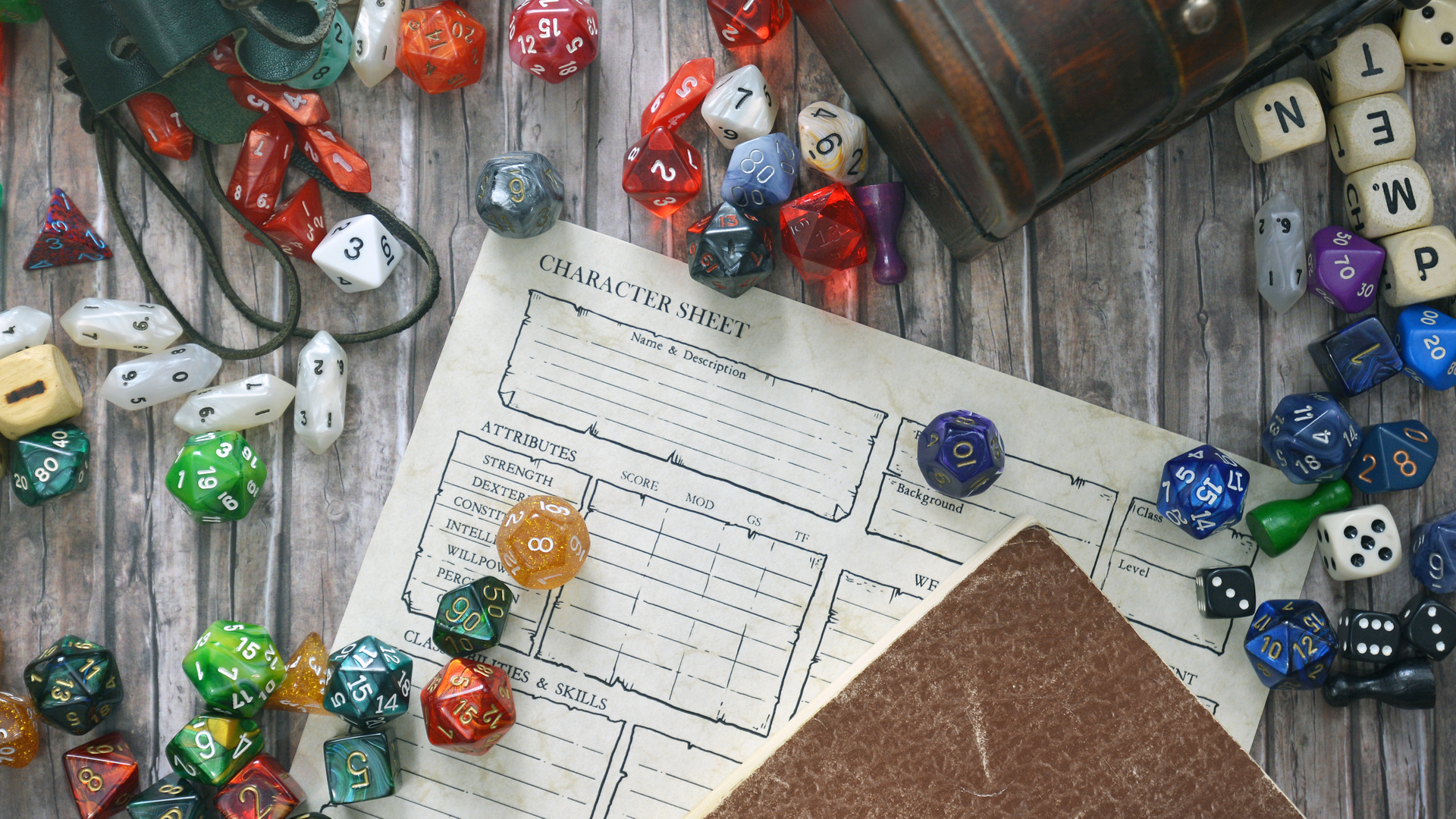I’d been playing Dungeons & Dragons for about two years before I built enough courage to run my own session. Being the Dungeon Master and directing the story is part of what drew me to D&D in the first place, but I quickly learned that it’s even harder than it looks.
I’ve now run two one-shots as DM. The first one actually went pretty well: everybody had fun, there were no major hiccups, and we finished everything I’d planned on time. However, I learned a lot of lessons from that first experience that made my recent second session go far smoother. So here’s what I think you need to know if you’re getting ready to DM for the first time.
Stand on the Shoulders of Giants
For my first session, I was excited to build as much as I could from scratch. I used the D&D 5th Edition rules, but I slapped a sci-fi skin on everything and ditched the Forgotten Realms for a space station of my own design.
This meant a huge amount of work for myself before the session. Not only did I need to decide how to repurpose D&D’s rules in a sci-fi setting, but I had to flesh out my story world, draw up space station plans, plan out a quest, and put everything else together for the session. It wasn’t until after the session that I discovered I was far from the first person to have this sci-fi idea, and I could have saved myself hours of time by cribbing from the ways other people had adapted D&D to a sci-fi world.
That’s not to say I don’t think you should design any gameplay elements yourself—creating your own world is an enormous part of the appeal of being a DM. But don’t be afraid to look at what’s out there already to save time on the boring stuff, or to speed up adapting the game to your own preferences.
For my second session, I simply ran the Lost Mines of Phandelver campaign from the original D&D 5E Starter Set. My prep time was reduced to almost zero and everybody still had an awesome time. If you just want to dip your toe into the DM waters to see how it feels, I highly recommend playing a premade campaign to get you going.

Dungeons & Dragons Starter Set: Dragons Of Stormwreck Isle
$16 $20 Save
$4
This set includes everything you need to get started playing Dungeons & Dragons 5th Edition: an abridged 32-page rule book, 5 ready-to-play character sheets, a set of polyhedral dice, and an adventure booklet for the Dragons of Stormwreck Isle campaign.
Get Some Names (and Voices) Ready
Even when I was using the prewritten campaign in my second session, I knew I’d need to come up with additional character names and voices ahead of time. In my first session, I littered the story world with nameless NPCs, whose purpose was simply to add a sense of life to the background. However, my players didn’t realize that and quickly started up conversations with a surprising number of them.
It’s no fun trying to conjure up a string of random character names and voices on the fly, especially if you don’t want to break the world by falling back on names that don’t belong there.
Instead, for my second session, I spent a few minutes with a random name generator and prepared a list of names I could pull from whenever I needed to create a new character on the fly. I also spent a bit of time thinking about the different voices I could confidently pull from to help distinguish these characters. I’m not very good at accents or different voices, so figuring out what options I could rely on ahead of time was incredibly helpful.

Related
Want to Play Baldur’s Gate 3 With Attenborough? AI Voice Mods Make It Possible
For some supernatural commentary.
Don’t Get Tied to Your Prep
Prepping for your first session as DM is definitely a good idea. You should be familiar with the rules, the primary NPCs, the world, and the quest’s objectives. But in my opinion, you should avoid prepping too much and planning out the campaign in granular detail. This is because you can’t predict all the choices your players will make, and you don’t want to force them to go in a certain direction just because that’s what you’d planned for.
The most memorable D&D sessions I’ve had as a player were the ones where we took the campaign in a wild and unexpected direction, and the DM let us roll with it. This always resulted in madcap antics, hilarity, and more engaging gameplay because nobody knew what was going to happen next.
As a DM, you should be open to letting your players lead the session. If you’ve over prepped, it can be difficult to let this happen because you don’t want to see all your time making plans go to waste. My recommendation is to get the basics of your campaign together, then trust yourself to improvise the rest so that you’ll be more open to the players taking you totally off route.

Related
ChatGPT Isn’t a Great Dungeon Master (But I Use It to Run Games Anyway, Here’s How)
AI is terrible at DMing, but here’s how I use it to run games.
Repackage and Reuse Whatever You Can
Although you should let your players choose the direction they want to take the game, that doesn’t mean you need to risk losing all your prepared material. In my first session, I found myself completely stumped when my players unexpectedly killed an important NPC before he could pass on vital information. By my second session, I’d realized the simple solution to this issue is to simply give that information to the next NPC they encountered, to repackage and reuse it.
This is infinitely useful for all kinds of things. If you want players to go into a particular room, but they choose another door, just change the map in your head and make the new door lead into that predestined room. If they glossed right over a potential puzzle or bypassed a powerful enemy, just hang onto those ideas and place them into the campaign at the next appropriate spot instead.
In a sense, this advice goes against my previous guidance, which was to let players lead the session. But at times, you can effectively create the illusion that they’re going wherever they want, when actually they’re playing right into your hand and not a second of your prep time has gone to waste. This isn’t always possible—and you definitely shouldn’t force it—but it can be a lifesaver at times. Many choose-your-own-adventure video games use the same tactics!

Related
The Best Tabletop RPGs That Aren’t ‘Dungeons & Dragons’
There are more tabletop RPGs out there beyond “Dungeons & Dragons,” so come see our favorite picks and find one to play with your friends.
Put Pressure on Your Players
When I presented my players with a difficult choice or a challenging battle, they had a terrible habit of deliberating over what to do for far too long. Before long, any narrative momentum or tension I’d built up had dissipated; we also ran the risk of the session taking too long and us not getting to the end on time.
Part way through my first session as DM, I decided to put more pressure on my players by starting a countdown for important decisions. If we were in a battle and they weren’t acting quickly, I’d announce that they’ve got five more seconds to act. If they didn’t decide what to do in time, we’d say that their character was frozen with indecision and I’d move onto the next turn. This feels harsh, but it quickly made our battles far more energetic and adrenaline-fuelled.
I used this technique outside of battles as well, although I’d give a much longer timer based on the situation, perhaps two minutes or so. If the players were still too deep in out-of-game discussions to take any action, I’d introduce an NPC to move things along. Maybe somebody would burst through the door and make an arrest, maybe they’d strike up a conversation, or maybe someone would commit a crime in front of my players, anything to encourage them to stop talking and start acting.
Play Fast and Loose With the Rules
D&D 5E has a lot of well-established rules, and if you’re new to the game or just new to DMing then it can be very difficult to remember them all at once. My personal preference is to play it fast and loose with the rules whenever it would hurt the pacing to stop the narrative and look something up. At the same time, if I thought ignoring a rule would make the campaign more exciting or funny, I’d often do so.
This can be a difficult balance, and it’s definitely not for everyone. I’d strongly recommend discussing this with your players ahead of the game. Some people very much enjoy following all the complex rules and would find it irritating and less enjoyable to see them getting broken. But if your players are open to a loose game style, then this approach can make it both easier and more enjoyable for you as a DM.
Let People Make Mistakes (and Die)
Stories need stakes, and it can help to establish them early on. Of course, I don’t think you should instakill any of your players’ characters right at the start of a game—and you should definitely be very precious if they’re coming into the game with characters they’ve been roleplaying for years—but I do think you should make battles dangerous and you shouldn’t be afraid of letting people find themselves in death saves.
All too often, when I’m playing D&D or listening to other campaigns on podcasts, nobody ever seems to be in real danger. Getting into death saves seems incredibly rare and actually dying hasn’t happened in a single campaign I’ve played or listened to. The result is that nothing ever feels dangerous for the characters.
My advice for DMs is to let your players make bad mistakes, get into difficult situations, and even die. If the worst happens, a player doesn’t need to sit out of the rest of a campaign, you could give them control of an NPC or have them roll a whole new character who will join the story. You could even set a new goal for the party to avenge their fallen comrade or to find a way to bring them back from the other side.
We all play D&D differently and come to the game for different reasons. Not all of this advice will work for every campaign, DM, or player, but I’ve found that these nuggets have helped me have a better time as DM and provide a more enjoyable session for my players. I hope they help you, too.





